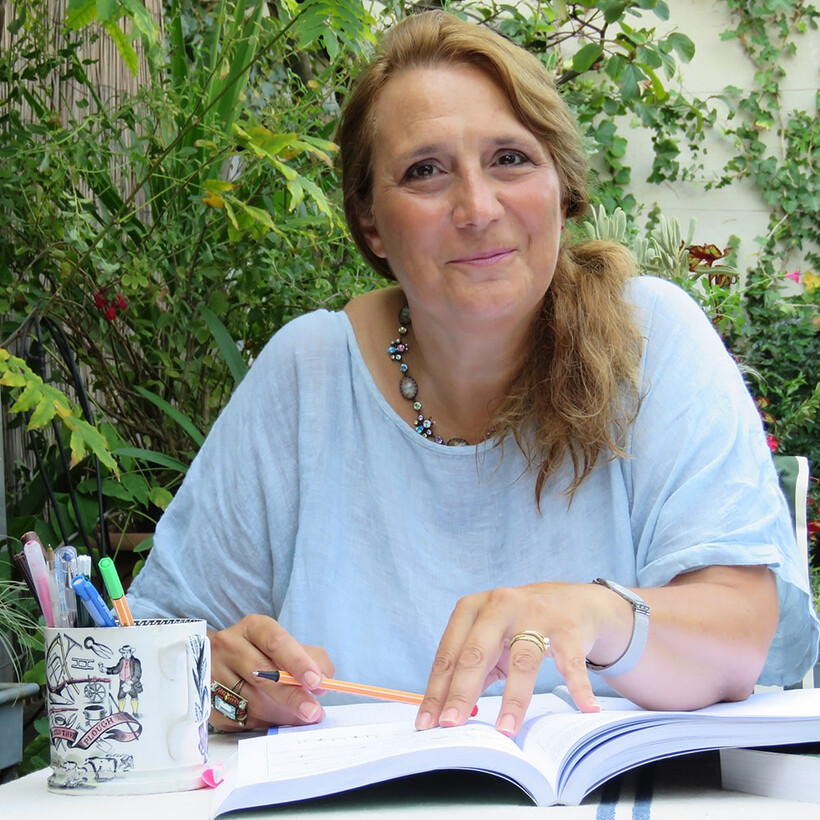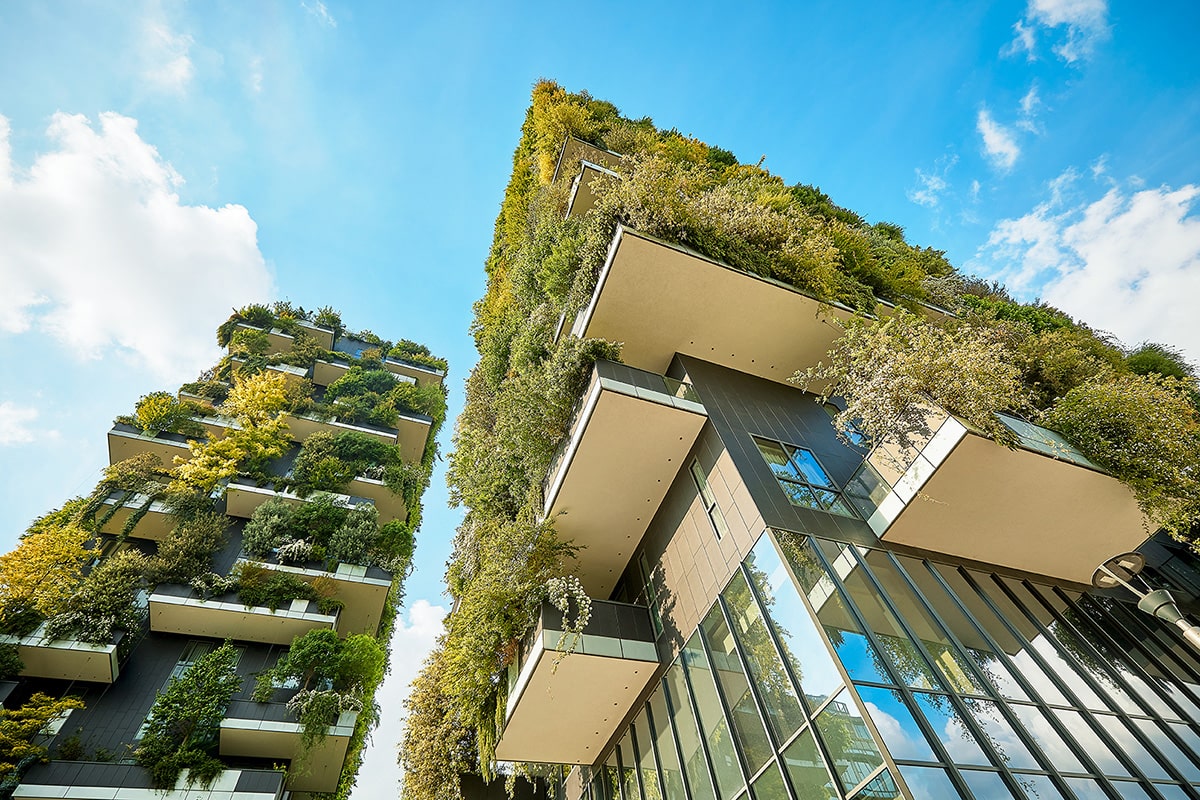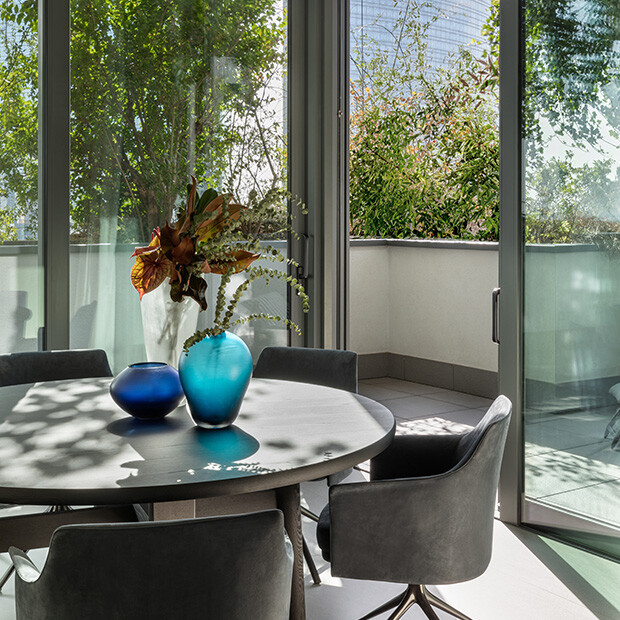Laura Gatti. The woman who thinks like a tree.
The agronomist-landscape designer that created and managed the greenery of Bosco Verticale defines herself as “a farmer without a farm” because she was born and raised in Milan. But her unique contribution to the verdant façades of “the most beautiful and innovative skyscraper in the world” seems to contradict her…
PN: There is an abundance of literature on the web concerning your career, and you are always defined as an “agronomist-landscape designer”: given the eclectic nature of your job, do you find the title sufficient to tell your story?
LG: Good question. I have a PhD in Agronomy, I have a degree in Agricultural Sciences, with postgraduate studies in Parks and Gardens, plus other related studies such as Environmental Management. When Boeri, Nouvel, or Cucinella plan to design a vegetative building, they call up my practice to benefit from a specific skill: my passion for trees.

PN: How was this passion born?
LG: When I was a child, I admired the roof of the Fabbri Editori publishing house in Via Mecenate (Milan) with my uncle. I remember there were cedar trees on top, I was fascinated: “trees on a building?”. Then, in Via Mascagni, next to Corso Europa, you look up and see an umbrella pine tree; it must be half a century old… Back to the definition of my work, I am a farmer without a farm because I was born and raised in the city, where I always focused on the “urban trees”, which are the ones that grow in the toughest conditions. My postgraduate studies in Parks and Gardens have brought me even closer to the landscape design world in general, not only in terms of its scientific contribution to production and farming. I studied courses such as Pathology and Physiopathology, thus with a strong scientific, technical, and technological connotation. Moreover, I have taught Agricultural Studies at the University of Milan for 15 years, and this department has always had a hands-on approach, without disdaining pure research. The course I teach since 2005 is Planning and Realization of Urban Green Spaces, which includes technological aspects that are fundamental in today’s green cities. Milan itself is going in this direction, even to make up for the damage done in the past.
PN: A this point, we would like to shift the focus of our questions on Bosco Verticale, but we prefer to not interrupt Laura, who indeed states…
LG: “Bosco” has marked a change of pace, even thanks to pre-farming at a nursery, a phase deemed necessary considering the complex structural aspects and the hazards of such operation. To create a building like Bosco, you need to think like a tree, put yourself in its… roots, know the infinite strategies that have been developed for structures optimized in relation to the settlement conditions. Because bear in mind, a tree is rooted to the ground, and needs to activate not only adaptation mechanisms, but defence systems too, and must do this with the least energy expenditure possible. Among these strategies, one towers above all: the dissipation from wind force, whose engineering calculations for Bosco confirmed that the trees couldn’t have withstood the wind forces when placed along the façade. Thus, we went to Germany at the KILT- Karlsruhe Institute of Technology, where there is an environmental aerobiology lab that has always focused on the relationship between trees and the wind. We presented our calculations to its professionals. Subsequent wind-tunnel testing of the trees proved us right. Bosco Verticale has made it clear to the world that “you can do it”: it is a milestone, because such an operation had never been performed before, especially at this scale and with these numbers. It is a lesson for the future: now we know that for these projects we need to think about the green side first.

PN: Back to the tree nursery and the 3 years of “pregnancy” before the transplantation to Bosco Verticale.
LG: The plants were not in vases but in an open field, with an appropriate spacing for 360° inspection of their crown. The plants have been selected one by one by an agronomist. There was also maximum attention to the transfer time of the clump from the soil to the façade: the most critical phase of the operation. Moreover, the wind calculations underlined a precise mathematical relationship to be maintained between the trunk dimensions and the crown spread. During the “pregnancy”, we have created a vertical environment similar to that of Bosco in order to reduce additional transplant shock. Thanks to such meticulousness, and even the expertise of the construction company, not one of the trees perished in the transfer.
PN: So the lay-out of the trees on the field corresponded to their future position on the façade?
LG: Yes, they responded to 2 evaluation criteria: wind resistance and tree size at maturity.
PN: Beyond the undisputable aesthetic and natural value, tell us more about the trees and plants once they were transferred to their new vertical habitat.
LG: People may think that the apartments lack natural light, but the opposite is true, because the trees are laid out following specific exposure criteria.
PN: May your job at Bosco be considered as finished?
LG: Ordinary maintenance is assigned to the BAM gardeners, and annual maintenance to the dazzling flying gardeners. The gardeners satisfy the daily needs of the plants and the individual residents. As for us, we follow the system’s evolution over time.

PN: What do you feel when you walk across Portanuova, look up, and see Bosco?
LG: I am a terrible, hypercritical person. I scrutinize it, rather than look at it. There are times I still have the chills, because there is a truly singular view from some of the apartments. In a magical symbiosis between the trees and the city, you look through their branches and catch a glimpse of Torre Velasca, the Milan Cathedral, and Monte Rosa at sunset on the horizon. The sky is all around you, and the shadow of your tree is projected on your living room wall. Extraordinary compositions. Just think that when it last snowed, I witnessed the trees blossoming and the passage of special birds, such as a sparrowhawk perched on a branch. It does occur that migratory birds take a break here before continuing their long journey. Consider that, for instance, there is thermal inversion at the 26th floor, because humidity stays lower: this creates incredible early blooming, cuddled by the song of a blackcap. Nature reclaims its spaces at an incredibly fast speed: only 2 months after we laid the first tree on the façade, and in spite of the deafening noise of the construction site, we found a nest on the second floor. Priceless…
PN: Is verticality a finish line or a starting point?
LG: If only you had seen the original Portanuova urban plan, so traditional and rigorous… Back then there was a green strip between the buildings that people walked on, but the initial plan would get rid of that too. Boeri proposed, instead, to expand vertically, freeing floorspace, because the concept of density is related to its perception: if you look at Bosco from the BAM park, and introduce practical pedestrian connections, the ground-level space works, and the architectures, though massive, are not overwhelming, but complete and sling the ground-level space towards the sky. Moreover, Boeri didn’t want his creation to have a glass façade, but a green façade, so we performed preliminary studies on pollution-absorbing and particulate-blocking plants. We worked to identify the most efficient smog-eating plants. And we found them. Now the challenge is to find solutions where such features are even more compatible with sustainability standards (e.g. water strategies). Then there is the greatest challenge of all: agricultural production downtown…
PN: What is more important in the everyday maintenance of plants at home: water or light?
LG: Light is crucial, but inside our homes it doesn’t always comply with the plants’ light intensity threshold. I recommend placing plants close to the window or compensate by means of specific red or blue lights. In any case, never overwater the plants.
PN: Do you talk to plants?
LG: No, it is they who insult me when they see me walk by: “Here come’s Laura, she wants to take us high up where we get dizzy, help!”. I’m joking… No I don’t talk to plants, but I do respect them a lot.
PN: Do plants perceive their surrounding environment?
LG: Of course. Their setting is made of chemical signals, and plants, in turn, release volatile organic compounds serving as advanced defence and information exchange mechanisms.
Epilogue
At the end of the interview, the list of questions planned is not entirely crossed out, true. But Laura, as creative people do, used the inspiration from a topic presented as a seed she helped germinate into parallel themes. She used every question (merely the ones not crossed out) as a tropical creeper to pounce onto other discussions. Put it this way: she used lateral thinking… to describe vertical thinking!